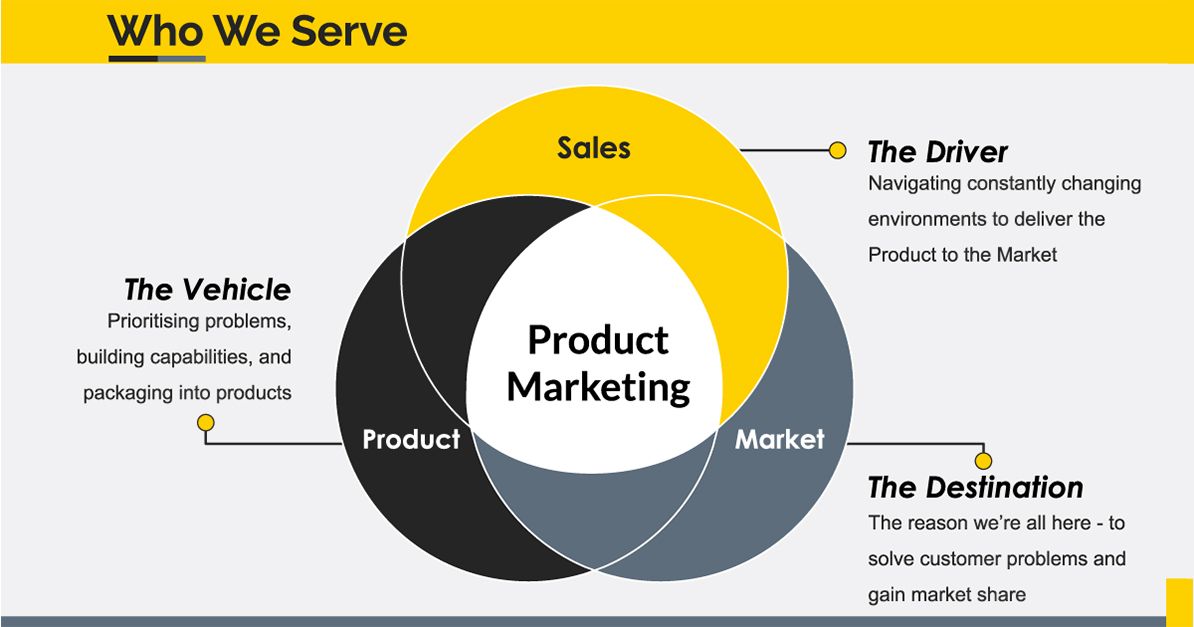Andrew Hatfield, Director of Product Marketing at Portworx, gave an honest account of the trials and tribulations he has faced when attempting to bring value to an organisation during his time in product marketing.
Having worked in sales as well as other areas of the industry, his insights shone a light on how best to work together and get the most out of everyone’s skill sets.
How you can increase your strategic value
“How can we do more than whatever the immediate need is right now? We all start with the end in mind, or at least we should. So when we're talking to customers, we think about how is it they're actually going to get our product? Let’s work backwards like a map.”
“There's procurement. What do they need? What's their timeline? What are their goals? Well, their goal is how can I get at least 3% off your price? That's their KPI. Then there's legal. What's their timeline? Then there's your stakeholders. The people that are actually going to be touched by whatever solution it is that you're providing. There's the executive buyer that's going to sign off on this. There's maybe a board. What's their timeline and approval process?”
“Then there's some form of investor. Now that might be self funded, it might be angel or VC, it might be private equity. Then you've got your founders. Maybe you're a larger, more mature organization, or you're even listed on NASDAQ or the stock exchange in Australia. Then you've got your product teams, as well as your legal teams. What can they say? Then there's dealing with the press and the media, all of your PR. There's dealing with analysts, then pricing.”
“So there's lots of different parts of your business. Just like there is for your market. So realistically, we serve two masters. There's the internal and the external. So there's all the internal teams; our teammates, our colleagues, the people that we collaborate with, love, know, hate. And then there's all the customers that we all love, and all the great media and our competition, right?”
“Product marketers are like the glue... they have that meta-role over the top of a lot of things where we have a broad understanding, but we know how to make those connections. That's why I think that our role is being that leader within an organization helping us navigate all of the pitfalls and mountains and rivers and valleys. This is why we do need to be strategic, or effective.”

“To get what you want it's really simple. There's only one thing you need to do, and that's help enough other people get what they want. Life is easy. We can all go home. It's not 42, it's helping others. But how do we do that? Right? Like, it's nice to have the little quote. But if we think about our organization, that we're always on the clock, there's always time pressures.”
“Something that I constantly learn almost daily, although I'm learning faster, is that just because we're in the same company doesn't necessarily mean we're in the same team. And it kind of makes me sad that I take the position of, well you hired me because I'm good at what I do. I'm pretty smart. I assume they hired you for the same reason. So therefore, I'm going to trust that you are good at what you do. Seems like a fair logical position. Does he interact a bit? Yep. Is that reciprocated? No.”
“So, sadly, you need to go through this process of proving yourself and building trust over and over and over. And initially I'm like, but I just did this. I've had this great win. We've achieved whatever the goal was, doesn't this carry forward? No. So it's always about working out what they're motivated by. They have different KPIs or okrs. They've got different goals, they've got different priorities, they have different masters.”
“What's in it for them? Why should they help you? Even though them helping you helps them. They don't care. They don't see that. It's solely what's in front of them now? They can't see what's over there. So I look at this as two macro actions; how can I serve them in helping them achieve what they need to do, while at the same time, get them to help me achieve what I need to do, which as we know, helps them, but they don't see that they don't care, right?”
“How can we balance those two, sometimes challenging or even opposing goals? What I've learned is that people don't care how much you know, until they know how much you care. It sounds kind of naff, or you know, warm and fuzzy. But until you can show that you genuinely care about what they're going through, what their challenges are, what their priorities are, how tough life is for them, they won't be invested in your challenges.”

“It's about listening. We listen to our customers, we need to do the same internally as well, because effectively, they're our customer. I hate that mentality and that ITIL way of thinking, because we should be on one team. But the reality is we're all hot, messy people. If you can show that you genuinely understand and if not help, at least can empathize with what product is going through or what field sales is going through that's different to sales engineering, they're much more likely to trust you with a real problem.”
“So if we think about putting all that together, we've got all these different cogs in the organization. Our goal, aside from our job, is how can we get buy in from everyone else, so that, for us to be successful, we're helping them and that they understand that this is a two way symbiotic relationship. It's not just take, we absolutely give. But that's not necessarily what they see.”
“So having them understand that for them to be successful, we need to be successful. For example, I used to work at a large software company. It was listed. I took a product, I own the product from a field perspective. I took the product from nothing to $4 million in a couple of years.”
“The GM hated the product and didn't want to sell it. So there was active anger and antagonism inside of the sales organization. But what we found is that the customers loved it. It was outside of the realm of expertise of this organization. But the big challenge wasn't that the customer wasn't smart. And it wasn't that the product was broken, or hard. But the way it worked was very different to what they traditionally thought.”
“So there was this dichotomy of purpose between what they're thinking should be, versus how this works. And not because the product wasn’t designed properly, but it solved a new problem, that the other ways of doing this couldn't. So therefore, it was different.”
“What we found was that there was a high loss ratio. We're expanding all this sales effort. So we sat down and I worked with, you know, the sales teams, the product teams and customers. Everyone's frustrated. And it's like Andrew, like if you can't turn this around, we're just going to dump it.”
“But I can see the potential. So we went through and we understood that, what it is that the customer needed, was just a little bit of education and some time to to adjust the way that they thought for this new problem, right? The existing products in the market couldn't solve this problem. That's why the problem existed.”
“We then decided to bundle design service. There's only a week of services with any net new sale. Now initially, who do you think was opposed to that? Who do you think initially objected to a week of professional services and additional cost? Was it the customer or was it the sales team? Sales! Like, oh no, I don't want to raise the price.”
“Well, what we found; adding services increased our win ratio by three times. All of a sudden the GM loves me. Product was very happy. And customers were like, man, this is just so simple. I just needed to understand, instead of thinking like this, I think like that. And all of a sudden the product really raced off and I was able to grow the the A and Z region, and APAC to be number two globally behind North America, overtaking Europe.”
“NPS went up. Importantly services revenue went up, which they were happy with, to the point where they could go and hire more services staff, which the people who like building empires and managing large amounts of staff were really happy with.”
“So these are things that, as a very pointed example of how I sat there and went, okay, so we've got a problem. Internally, we have opposition from management about the product at all and it's kind of like do or die. Customers like it when they can be successful, but they're struggling to get over that hurdle.”
“Internally, everyone's like, how do we do this? Because in North America, though, they just throw people at this and it's not a problem. We don't have that luxury here, we're much more geographically dispersed. We're much more parochial in that we don't like people flying in from different cities, let alone different countries. And then we have lots of different languages in AIPAC.”
“So how can we do that? So, most of these services were delivered virtually. All right, a lot of it was just paper design that we gave the customer. The product was easy to implement, once they understood how to install it. So these are the processes that I went through now that I've been talking about earlier of understanding what it is that my internal teams were gold on and marrying that with what my customers’ challenge was and how could we come together?”



